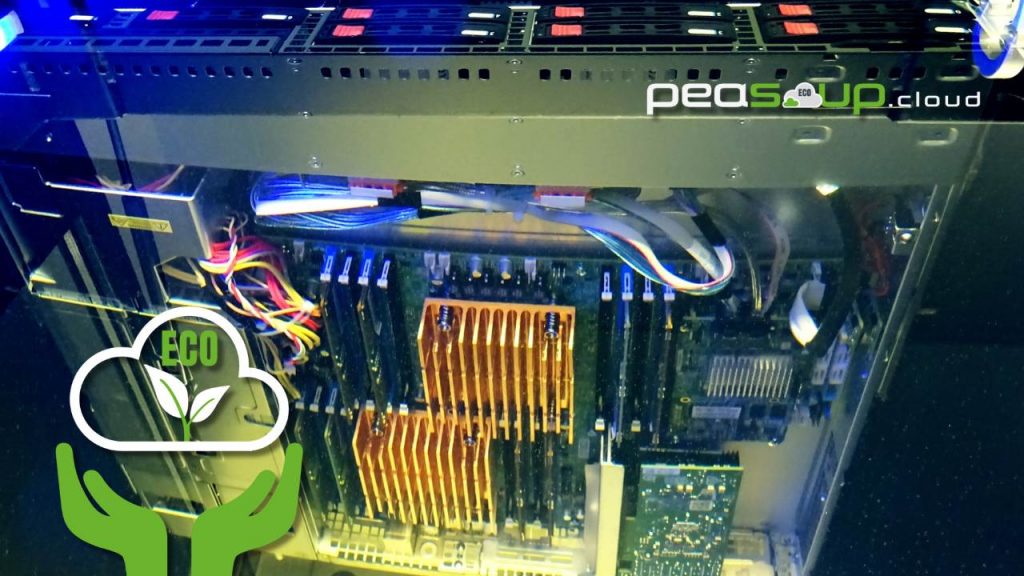Latest Innovations in Liquid Immersion Cooling Technology for Data Centres and the Cloud
In the ever-evolving landscape of data centres, where efficiency and sustainability reign supreme, cooling technology stands as a crucial frontier for innovation. Over the past two years, liquid immersion cooling has emerged as a disruptive force, reshaping the way data centres manage heat dissipation, enhance performance, and reduce environmental impact.
Traditionally, air-based cooling systems have been the cornerstone of data centre infrastructure. However, their limitations in handling the increasing heat loads generated by high-performance computing, supporting Generative AI and ML, have fuelled the quest for more efficient alternatives. Liquid immersion cooling has surged to the forefront, offering a paradigm shift in thermal management.
What is liquid immersion cooling about?
The principle behind liquid immersion cooling is elegantly simple yet highly effective: submerging IT hardware—such as servers, CPUs, and GPUs—directly into non-conductive coolant fluids. This method enables direct contact between the coolant and heat-generating components, swiftly drawing away heat and maintaining optimal operating temperatures.
What’s new?
One of the prominent advancements in liquid immersion cooling lies in the refinement of coolant solutions. Manufacturers have introduced novel dielectric fluids specifically formulated to maximise heat transfer while ensuring electrical insulation and corrosion resistance. These fluids not only excel in dissipating heat efficiently but also contribute to extending the lifespan of hardware by minimising thermal stresses.
Moreover, recent strides have focused on enhancing the design and architecture of immersion cooling systems. Innovations in modular, scalable immersion cooling infrastructure have allowed for greater flexibility in deploying and expanding these systems within data centres. These advancements empower businesses to adapt their cooling solutions seamlessly as their computational needs evolve.
What’s for the planet?
The environmental benefits of liquid immersion cooling cannot be overstated. By significantly reducing energy consumption for cooling purposes, these systems contribute to substantial carbon footprint reductions. With the global push towards sustainability, data centres adopting immersion cooling align themselves with eco-friendly practices while ensuring optimal performance.
What about the efficiency?
In addition to efficiency gains, the adoption of liquid immersion cooling has unlocked spatial advantages within data centres. By eliminating the need for bulky air-cooling infrastructure, this technology optimises floor space, enabling denser hardware configurations and ultimately boosting computing power per square foot.
Furthermore, the durability and reliability of hardware in immersion-cooled environments have been notably impressive. The consistent operating temperatures achieved through liquid immersion reduce thermal cycling and hotspots, mitigating the risk of component failures and enhancing overall system stability.
AI for AI
Another notable trend is the integration of artificial intelligence (AI) and machine learning algorithms in managing immersion cooling systems. These intelligent systems continuously monitor temperature variations, fluid levels, and hardware performance, allowing for real-time adjustments and predictive maintenance. Such smart systems optimise cooling efficiency, reduce downtime, and further improve the lifespan of hardware.
Future
Looking ahead, the trajectory of liquid immersion cooling appears promising. As research and development persist, ongoing innovations will likely tackle existing limitations, driving greater efficiency, cost-effectiveness, and scalability. The convergence of liquid immersion cooling with emerging technologies like edge computing and 5G networks also promises intriguing possibilities for a more interconnected and efficient digital ecosystem.
What’s for Cloud Computing?
Integrating liquid immersion cooling within cloud computing infrastructures presents a multitude of benefits. As cloud computing continues to expand, driving the digital transformation across industries, the efficiency gains from liquid immersion cooling are poised to amplify its impact further.
Cloud computing relies on high-performance servers and data centres to deliver rapid and reliable services. Immersion cooling ensures these servers maintain optimal operating temperatures, thereby enhancing their performance. This means improved response times, better reliability, and enhanced user experiences for cloud-based applications. The environmental advantages of liquid immersion cooling align seamlessly with the sustainability goals of many cloud service providers. By significantly reducing the carbon footprint through lower energy consumption for cooling purposes, cloud computing can embrace a more eco-friendly approach, appealing to environmentally conscious users and meeting regulatory requirements.
With the rise of edge computing, where data processing occurs closer to the point of data generation, immersion cooling’s space-saving, efficient thermal management and heat exchange capabilities become pivotal. This technology can be deployed in edge data centres or micro-data centres, enabling powerful computing in constrained spaces, and heating local amenities while maintaining optimal performance. Win-win scenario.
In summary, the past two years have witnessed a transformative phase in data centre cooling, propelled by liquid immersion technology. Its capacity to address the escalating demands for performance, sustainability, and space optimisation positions it as a cornerstone of future-ready data centre infrastructure. As businesses increasingly prioritise efficiency and environmental responsibility, the ascent of liquid immersion cooling stands as a testament to innovation driving progress in the digital age.

